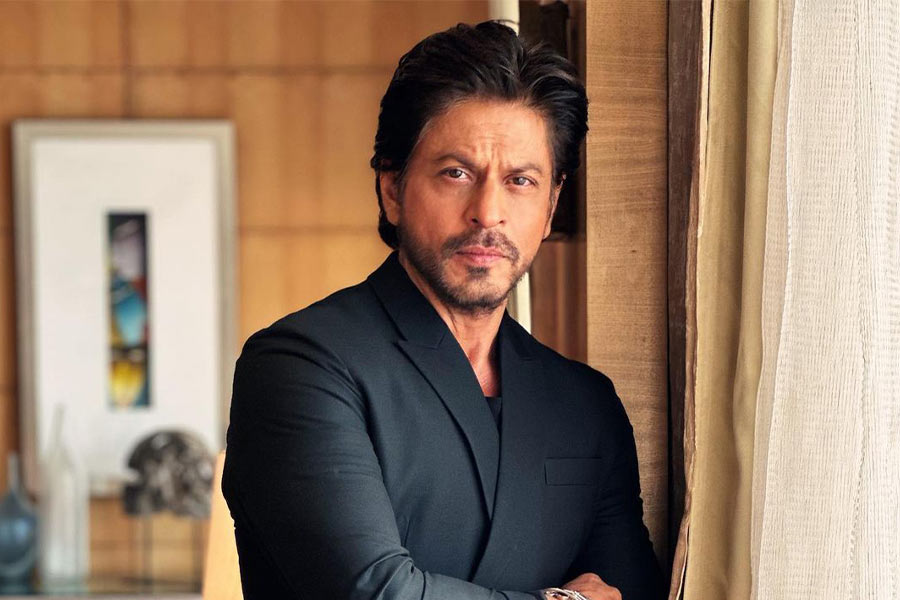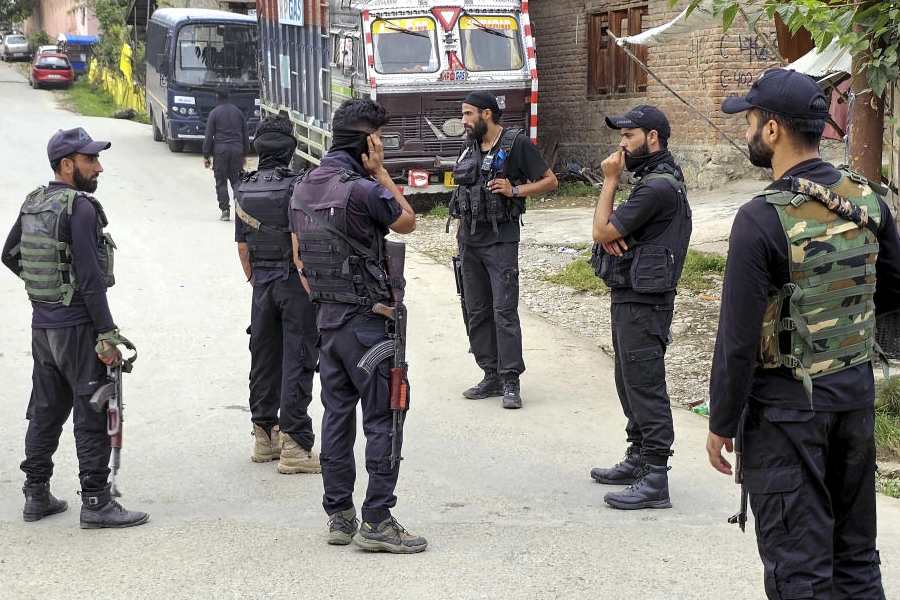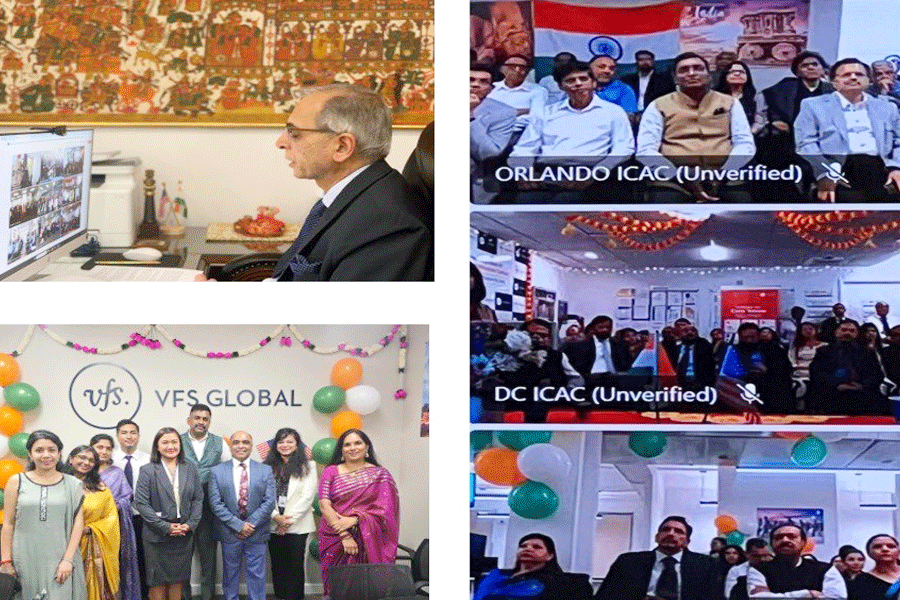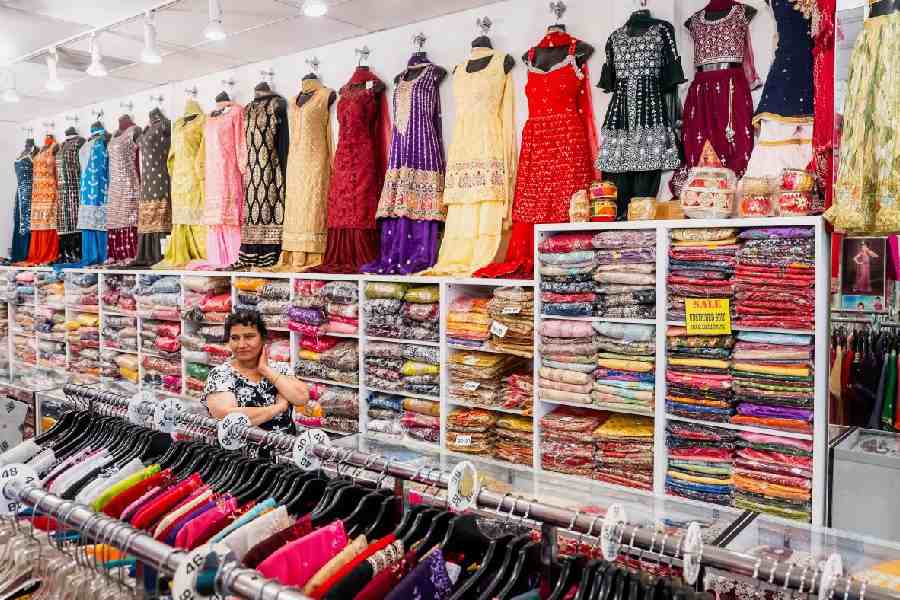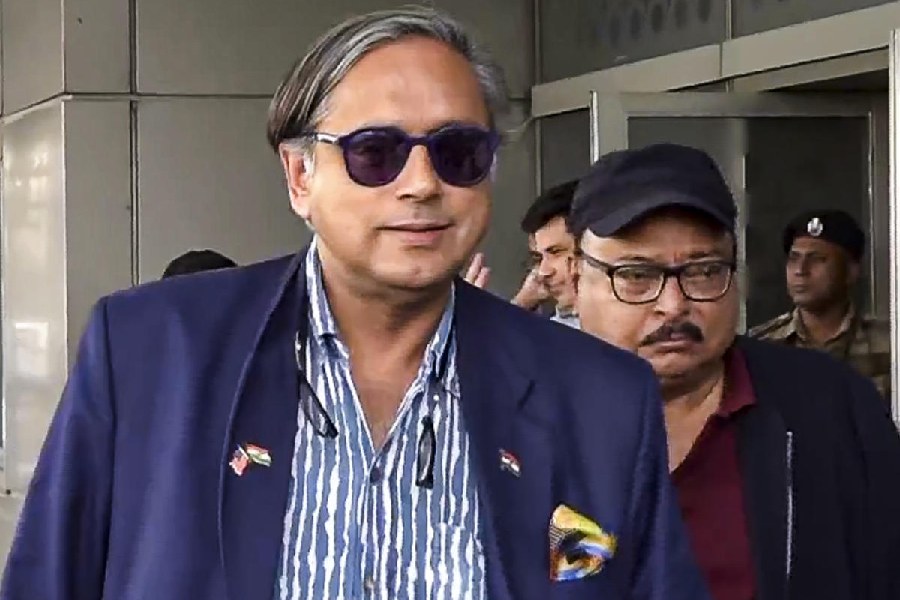 |
| Damian, Hurley’s son, waves to the media after arriving at Jodhpur. (AP) |
London, March 7: This time last year I was in the Trophy Bar of Umaid Bhavan Palace having a drink and a chat with Gaj Singh II, the erstwhile maharaja of Jodhpur, who will today, poor fellow, be putting up with the Liz Hurley-Arun Nayar wedding bandwagon and even accommodating the newly married couple in his personal quarters.
These days, the maharajas think nothing of exchanging mobile phone numbers and ringing you up to say: “Cocktails at 7.30 pm at my place” (palace, they fear, might sound a trifle pretentious).
If reports are correct, the maharaja, who is an affable man, has been banned by Hurley from carrying a mobile inside his own palace, which, frankly, is a bit of a cheek. But since all hoteliers need money, the maharaja, who has a management deal with the Taj group, will probably quietly accept this indignity of being told what he may or may not carry.
As palace hotels go, Umaid Bhavan, with its art deco interiors, is in the premier league, along with perhaps the Lake Palace and the City Palace in Udaipur and Rambagh in Jaipur.
From the 26-acre gardens, the huge golden yellow stone and marble structure inspires shock and awe. But my favourite view is from several miles away from the ramparts of Mehrangarh, one of the biggest forts in Rajasthan, where Hurley has planned another of her bashes.
Umaid Bhavan, designed by an Edwardian architect, Henry Vaughan Lanchester, was started in 1929 and completed in 1944, using no mortar or cement but a system of interlocking stones. Built on a hill, it dominates the surrounding desert and from a distance resembles a giant spaceship approaching lift-off.
It is because of the harsh terrain that the maharaja’s ancestors had to spend a lot of their time on horseback and thereby developed a comfortable cut of trousers — baggy at the top and tight from knee to ankle. Appropriated by the British, this is now known as the “Jodhpur breeches”.
The design was taken (stolen?) by a tailor when Sir Pratap Singh, younger brother of the maharaja’s grandfather, went to London in 1887 for Queen Victoria’s golden jubilee, lost his luggage and needed replacement trousers.
It so happens that Pratap’s granddaughter, Shobha Kanwar Baiji, still lives in the palace — Hurley’s guests should certainly get the history of the Jodhpur royals as well as wedding protocol from her.
These days the Rajasthani wedding circuit — I have survived a couple, including the Chatwal extravaganza — is pretty well tried and trusted. Three or four parties in Mumbai are followed by wedding celebrations in the palaces of Rajasthan, complete with elephants, camels, colourful turbans and saris and cuisine from the royal kitchens, and ends with a couple of big dos in Delhi.
For foreigners, the trick is to take the sun and alcohol in moderation, keep off the drugs and slot in a couple of shop-till-you-drop expeditions — the jewellery is exquisite, bespoke silk Jodhpur jackets can be tailored overnight, and the durries spun by the local Bishnoi tribesmen are amazing — Camilla (who had come with Prince Charles last year) went mad and bought enough to stock a shop.
For westerners attending the marriage parties, there are always Rajasthani men on hand to help guests tie their turbans tightly at the rate of one a minute and women to assist with saris.
Baiji explained to me: “Red, yellow, orange and pink are the colours of Rajasthan. We wear those on big occasions, especially weddings, whether in turbans or saris.”
One welcoming gesture the royal family will probably make is use red dye to paint the outline of incoming feet at the main palace entrance. As happened with Charles and Camilla, the maharaja and his maharani, Hemalata Rajye, a former Kashmiri princess, may even be present, as Mr and Mrs Nayar arrive to a shower of rose petals, the blowing of conch shells and the aarti. My guess is that the maharaja will pull out all the stops for the lovely Liz.


